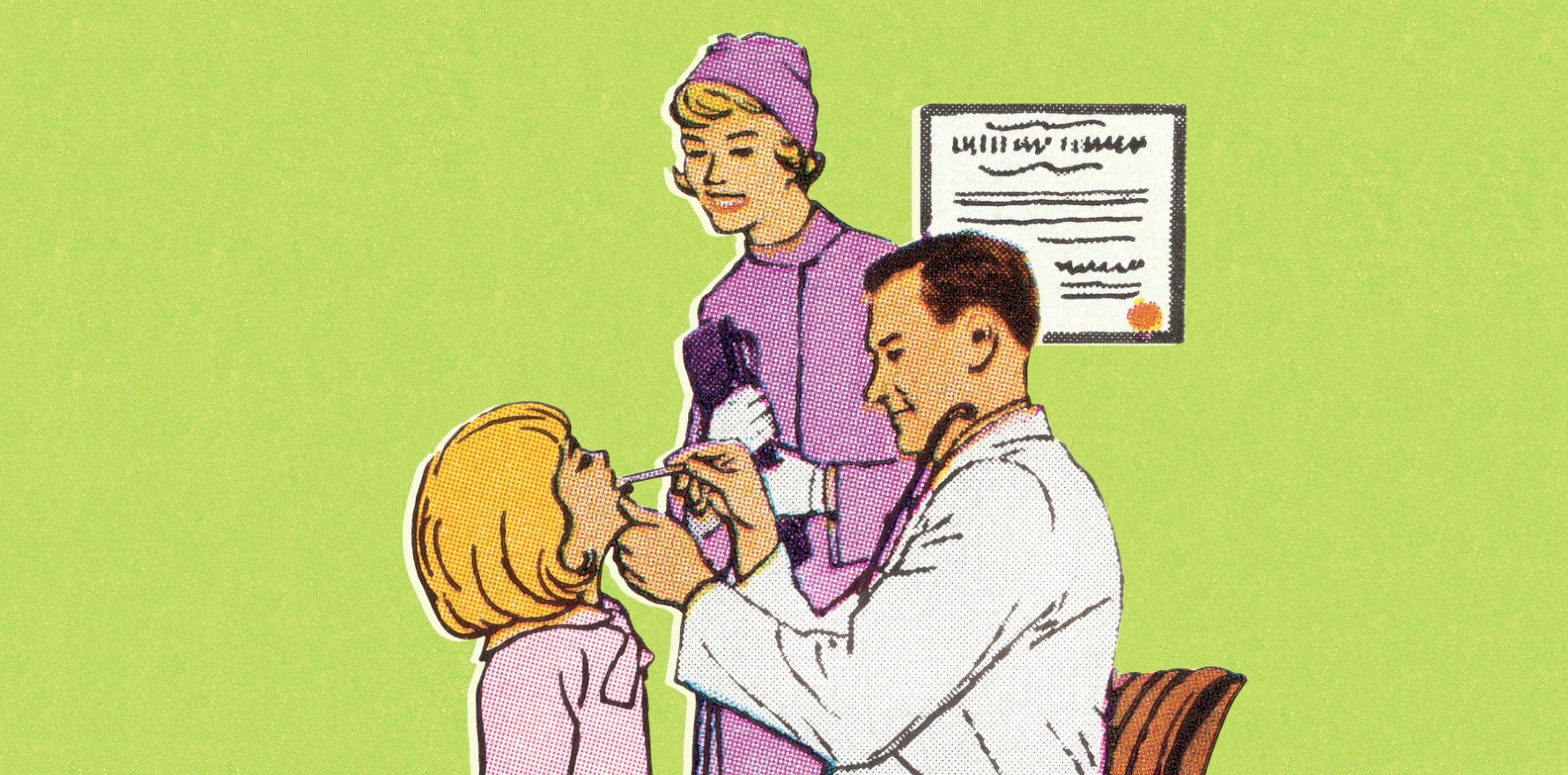We want to solve our problem, but not THE problem.
I know that nostalgia is an unfaithful mistress but things really were simpler when I was growing up.
I am a child of the 50s and 60s and one of the joys of living in that era was the introduction of television. Leave it to Beaver, My Three Sons, Zorro, Roy Rogers, the Marx Brothers and I Love Lucy dominated my black-and-white after-school afternoons.
I remember one episode of I Love Lucy when her real-life and onscreen husband, Desi Arnez, came home from work to find Lucy on hands and knees in the living room.
“What are you doing Lucy,” he asked. “I’m looking for my earrings.”
“You lost your earrings in the living room?” “No, I lost them in the bedroom.”
“Then why are you looking for your earrings in the living room?” “Because the light is better here.”
The question I want to pose today is whether, just like Lucy, we have been looking for the solutions to the problems in rural and general practice in the wrong place.
The single employer model, just like any good idea, can be misappropriated or misrepresented. I have been called the architect of the model. But nothing is new under the sun and every interaction I have had with rural doctors and GPs, communities, patients and bureaucrats, politicians and policy makers has contributed to the concept.
The elegance of any structure or system is determined by an understanding of this purpose and simplicity of design.
Simple is not simplistic. Simple is strategic, efficient and uses leverage. It is responsive, evidence- and results-based and has built-in accountability. It is founded on a unified and transparent sense of purpose.
Achieving simple requires a deep understanding of the underlying complexity.
Simplistic is transactional and opportunistic, lacks focus and leverage. Simplistic is inefficient and ineffective. It is reactive, can be influenced by vested interests, is not transparent and can be overly bureaucratic. Simplistic solutions lack accountability and can often lead to more complexity.
Simplistic layers mistake on mistake.
Related
The history of rural workforce policy and indeed reform in general practice has been simplistic. The taxpayer has a right to ask the question – where has the money gone? To understand simplistic you just have to follow the money.
I first mooted a single employer model for rural and general practice training over 15 years ago at a meeting of the misnamed United General Practice Advisory Group. It was loudly condemned.
Registrars in general practice under the fee-for-service, percentage-based remuneration NGTPAS model could then earn more than their hospital colleagues, when industrial awards were not as attractive as they are now. GPs didn’t want to pay their registrars a fixed salary because that might affect turnover and profitability.
The rejection was never about the quality of training or patients.
Capital follows opportunity and people follow the money.
Now, I am informed that the SEM is going viral. Registrars are clamouring for it because of the benefits of attractive award pay and conditions, maternity leave, so-called “safe” working hours and transfer of benefits across training sites. Everybody is trying to jump on the train.
What was essentially conceived as a simple, unbureaucratic, cost neutral, workforce and service delivery model, focusing on how best we could deliver continuity of comprehensive care to people in rural towns, has now been potentially hijacked.
We have thrown literally billions of dollars at rural medical workforce initiatives, training programs and general practice. To what end?
The rural and remote workforce crisis is in many areas, in many ways, significantly worse. We have transitioned from a situation where service delivery was based on individual responsibility to one where the system becomes the default.
If this is to be the future we need to ensure that the system is results-based, has clearly understandable processes and is accountable to standards, benchmarks and metrics.
Only around 12% or 13% of graduates intend to do general practice. Effective policy initiatives lack leverage and are treated as pilots or trials. Governments are forced to take decisions to improve access (such as urgent care clinics) and affordability because, simply put, the current system and structures under which we, as rural doctors and GPs, work hasn’t delivered and we haven’t been able to deliver within them.
In every practice I go to, I ask what are the biggest challenges they face. Invariably the answer is workforce and Medicare rebates. As doctors we tend to see all the problems and solutions in medicine through the prism of Medicare. We want to solve our problem, but not the problem.
Yet I see these as the results and perhaps inevitable consequences of structural problems in general practice. Workforce and rebates are symptoms and not the cause.
I have lost count of the number of opportunities to meet the challenges of rural and general practice that have been lost because we keep coming back to the political rhetoric of Medicare rebates.
You know how it goes. If rebates don’t increase then patients will be forced to pay more, or practices will go broke. Even worse, we cynically use the problems in rural and remote communities as an argument for change that will only entrench the medical divide and put more control in the domain of those responsible for previous failures, and without accountability for outcomes.
A case in point of another missed opportunity is payroll tax. Sharpen your knives.
I believe that payroll tax could be one of the best things that has happened, if we take the opportunity presented to think differently about the problems and solutions in rural and general practice.
What’s payroll tax got to do with rural workforce, general practice and single employer models? At risk of walking into a lion’s den, hear me out while you’re sharpening those knives.
The real cause of the problem in general practice is that we have hyper-competition for doctors, because of the number of practices. Any person can establish a medical practice and when they discover that they need a threshold number of doctors to turn a profit, they have to offer more to compete for workforce.
When you have an engagement model built on service contracts and remuneration model based on a percentage of FFS Medicare, you have a perfect storm. The end result is not about structures and systems that ensure we can meet the modern healthcare needs of communities and patients, which is what the single employer model is all about.
The current management services contracts and independent contractor arrangements in general practice developed as part of the corporatisation in medicine that evolved shortly after the introduction of Medicare. The model was established for two reasons – to avoid medico-legal liability and to – wait for it – avoid payroll tax.
It was always a tax avoidance measure. It was also designed so that Geoffrey Edelstein could become rich enough to buy the Sydney Swans because doctors were paid initially only around 45% of their billings.
Profit, not patient care, was the key motivation. But corporatisation of medicine has moved on from a built-for-=profit to a built-to-sell model.
With the current hyper-competition for doctors, practices are being forced to negotiate contracts where payments are increasing to over 75% in many cases and recently, we saw in the medical press that 90% was being paid. How can a small practice compete with larger practices and corporate groups with their economies of scale?
This is not an attack on corporate medicine. Many corporates do it very well, providing access and affordable care.
My point is that the current independent contractor model is not sustainable, either financially or, in reality, clinically. It is no longer fit for purpose and indeed has become part of the problem.
Doctors working under this model are simply “gig” workers. They have none of the benefits of either owning their own business or of employment.
They aren’t really running their own business. They aren’t investing capital, they have no equity in their business or return on equity. The only equipment or assets they have is a stethoscope and perhaps their training and skills.
Their patient medical records are not exclusive but open.
Would Woolworths tell Coles how many packets of cornflakes they sell? Independent contractors can’t simply walk away with their patients and when they retire they have nothing to sell.
They also have no benefits and protections of employment such as worker compensation, holiday pay, personal and carers leave, maternity leave, long service leave and have to pay their own superannuation.
And it doesn’t work for practices either. At 50% practices were making a profit but under the current arrangements there is no profit. And, consequently, there is no capacity to engage in practice-based quality assurance, improvement and practice-based public health, preventative health measures and chronic disease management.
Any increase in rebates simply goes to the doctors and so this is why we have the paradox of a significant increase in funds for general practice under a rise in bulk-billing incentives, that goes mainly to doctors, who are caught in an activity trap.
Smaller practices are being left behind because they can’t compete.
Increasing rebates won’t solve this problem or the problems afflicting general practice under the current engagement and remuneration models.
And for doctors in training? What the registrar response to the SEM is showing us is that junior doctors don’t want to work under the system, which some of us are trying so hard to preserve. They want certainty, industrial protections, collegiality, to work in teams and have support.
They don’t want to be independent contractors working under a churn-and-burn model.
Where have all the GPs gone? They are all becoming salaried ED specialists working in a team, not independently, and with defined workplace conditions.
The best that the campaign against payroll tax can achieve is a maintenance of the status quo. And the status quo is the last thing we need in general and rural practice.
I could go on for some time about why fighting for payroll tax exemption is just a bad idea, but I would simply say that the SEM is a model that is designed to disrupt the status quo and focuses on the needs of patients. It is a system leveraged to address the need for structural reform in rural practice.
Properly navigated, the payroll tax issue can be used to address the structural problems that are the cause of the decline. The real question around payroll tax is not whether GPs should be exempt but why anyone such as all those pseudo-charities out there should be exempt, or why anybody should have to pay it.
Progress doesn’t come from agreement. It comes from disagreement.
As physicist Max Planck said: “truth does not triumph by convincing its opponents and making them see the light, but rather because its opponents eventually die and a new generation grows up familiar with it”.
To progress we have to think outside the box, to think “beyond agreement”.
It was an understanding of the true nature of the workforce crisis in rural, remote and metropolitan areas, and an appreciation of the limitations in the way in which we engage and remunerate our general practice workforce clearly pointing to the need for structural reform, that was the lightbulb moment for the SEM.
In rural practices the workforce issue is about delivery of comprehensive and continuous care across a range of settings 24/7. It is about patient care.
In metropolitan areas the workforce perception is about business imperatives.
The SEM is not about profit for practices, or improved industrial protections for trainees, or state/federal cost shifting, but about patients.
Lose sight of that, corrupt the fundamental elements of the model, turn it into just another training program, introduce fee-for-service top-ups or percentage-based limits to practice payments, layer it in bureaucracy or political speech, put it under the control of colleges and not trainees or communities, and the system will collapse and another good idea will go begging.
So, what’s the future of the SEM?
The biggie is about better aligning the current workforce with need during pre-vocational training.
Change current requirements so that all doctors, regardless of intended specialty complete a compulsory third year prior to vocation training in a rural or remote community under an SEM.
This would immediately provide the policy leverage and workforce we really need to fix our crisis, get doctors where they are needed and get rid of our reliance on locum agencies and limited fly-in fly-out, fly-by-night services.
Putting the SEM on the agenda as a post-fellowship system would also allow practices and doctors to make best use of the special skills, such as paediatrics, mental health, palliative care and procedural skills for the benefits of expanded communities of care beyond their private practice, while ensuring that joint responsibility is taken for comprehensive care by providing workforce support.
Nietzsche said that the highest form of human stupidity was forgetting what we were trying to achieve in the first place.
We may laugh at Lucy looking in the wrong place for her earrings, but at least she knew what she was looking for.
Rural and remote health is a moral issue. Respect is not just a statement at the start of a meeting, or text at the bottom of an email or slogan on a T-shirt. To truly have and show respect we all need to take individual responsibility for action and outcomes.
As privileged doctors we don’t have an entitled right to feel comfortable. We have a responsibility to be disturbed, to get out of our comfort zone, to take personal action that really makes a difference to the lives of people, our patients and communities; and not get caught in political games, or leave it to the system to fix, or say that it’s someone else’s problem, or worse, use the crisis for selfish ends.
Respect is about deeply listening to Aboriginal and Torres Strait Islander people and others living in rural communities, on their land and on their terms.
So the choice is clear. We can adopt a Trumpian, transactional approach encapsulated by Groucho Marx when he said, “Why should I care about future generations? What have they ever done for me”.
Or we can adopt the philosophy of Mae West that challenges motivations and is a call to something higher, when she said: “I never said I would be easy, just that I would be worth it.”
Rural and remote practice, “come up and see me sometime”.
This article is a copy of a presentation made to delegates at the Riverland Single Employer Model workshop in Renmark on 8 May 2024.
Dr Paul Mara is a rural GP of 40 years’ standing. He is also managing director of Quality Practice Accreditation.





